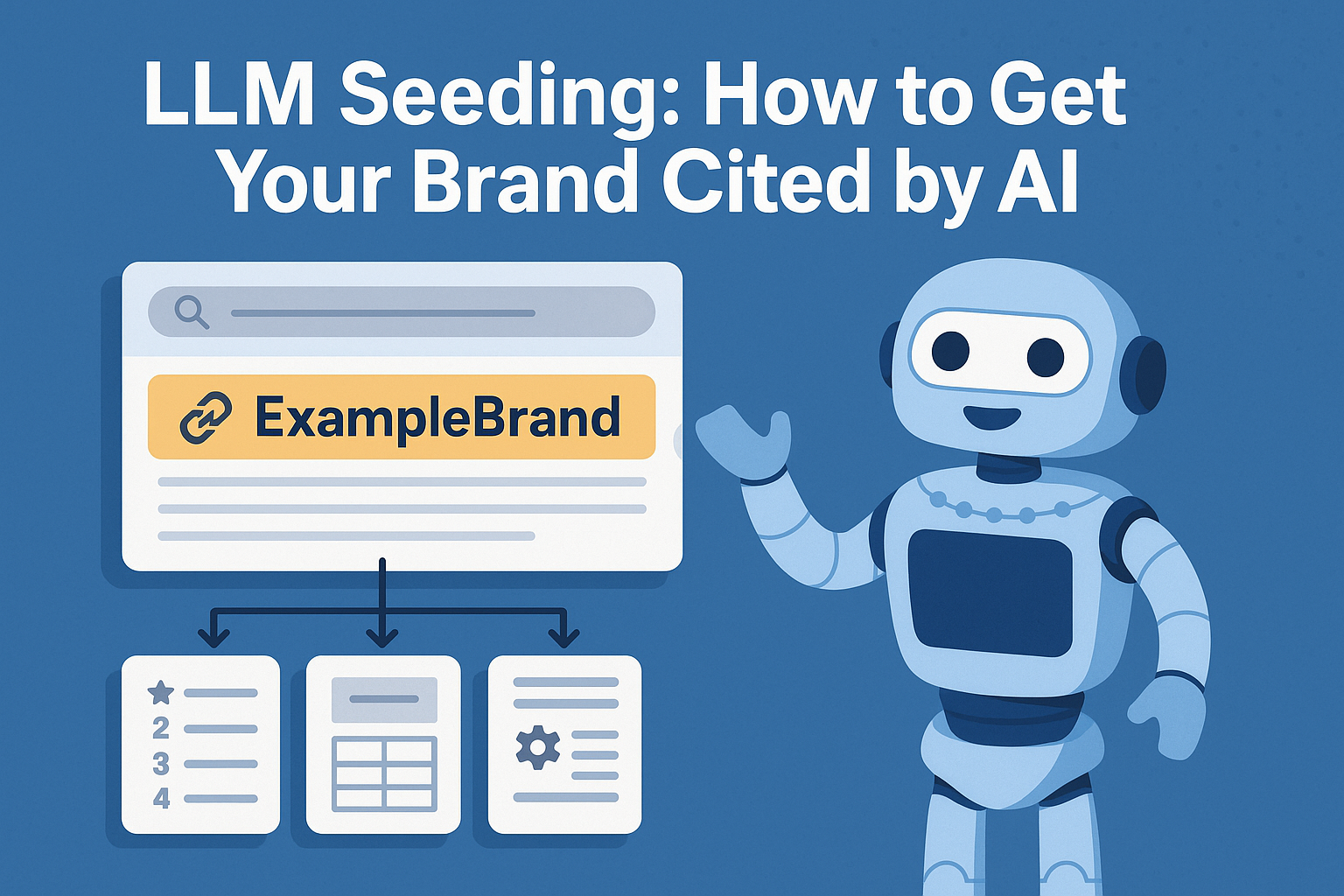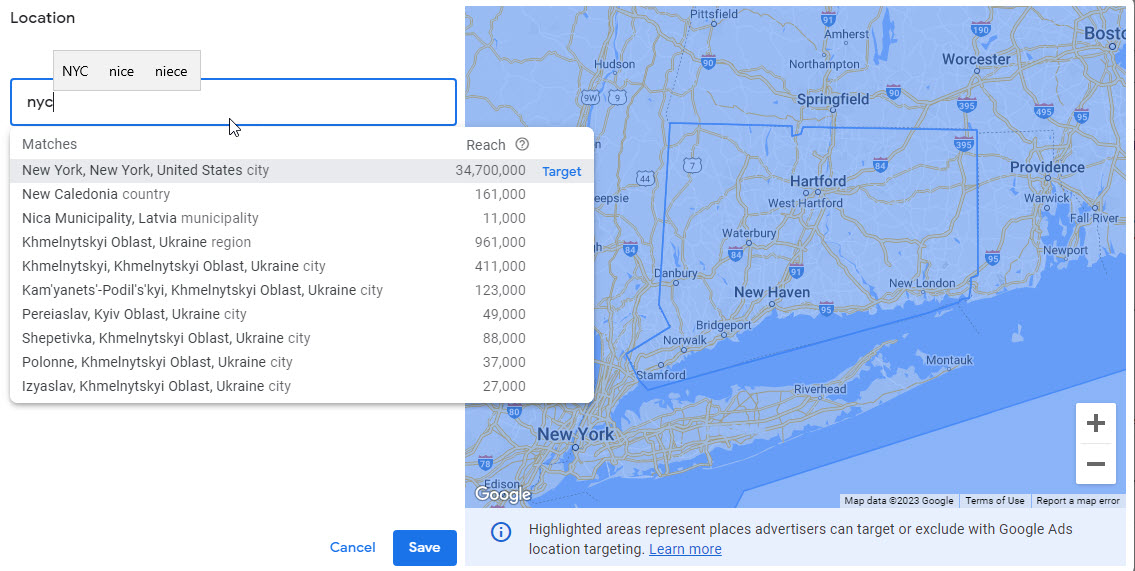Objective: What’s LLM Seeding? And Why Now?
At Magal Global, we’ve always known the game changes fast. But this time, it’s not just another algorithm update or platform tweak. The rise of AI search and Large Language Models (LLMs) like ChatGPT, Perplexity, Claude, and Gemini has fundamentally changed how people find and trust information.
Organic clicks are declining. AI-generated summaries are answering user questions directly. In many cases, your target audience no longer even sees your website in traditional search.
So how do you stay visible when no one is clicking? By getting cited inside the answer itself.
LLM Seeding is a strategic method for earning citations and brand mentions directly inside AI outputs. It shifts your focus from traffic to trust, from rankings to references. When someone asks an LLM a question, and your brand is part of the response, you’ve already won the first stage of mindshare.
At Magal Global, we’re using this method to keep our clients at the center of the conversation — even when the clicks are gone.
Here’s how we do it.
Step 1: Understand What LLM Seeding Is
Before you apply the strategy, you need to recognize how it differs from classic SEO.
LLM Seeding is not about ranking on Google. It’s about being cited by AI models when users ask questions.
These models don’t just crawl the web. They extract, compress, and synthesize content. The more structured and trustworthy your content is, the more likely it is to appear inside an AI-generated answer – even if you’re buried on page 4 of Google.
Here’s what that means in practice:
-
You’re optimizing for visibility in answers, not just rankings.
-
You’re building brand awareness through citations, not backlinks.
-
You’re targeting the moment of trust, not the moment of click.
The result: more branded searches, direct traffic, and long-term authority.
Step 2: Publish the Right Kinds of Content (With Examples)
To get cited, you must produce the kind of content LLMs understand, extract, and prioritize. Below are the content formats that consistently perform best in AI-driven environments — along with real-world use cases.
1. Structured “Best Of” Lists
LLMs prioritize clearly formatted comparison lists.
Examples:
-
“Top 10 AI Tools for Solopreneurs in 2025”
-
“Best Forex Brokers in South Africa for Beginner Traders”
-
“Best CRM Tools for Agencies Managing Global Clients”
Use consistent formatting, clear subheadings, and include use-case labels like “Best for remote teams” or “Best budget solution”.
2. First-Person Product Reviews
LLMs look for authentic, experience-based content.
Examples:
-
“My 30-Day Review of AvaTrade’s Platform in the EU Market”
-
“Testing 7 Standing Desks: Here’s What Surprised Us”
-
“Why Tesla Performed Better Than Expected”
Describe the testing process, add credentials, and provide specific pros and cons. This builds credibility with both AI models and users.
3. Brand vs. Brand Comparison Tables
LLMs often answer product and tool comparisons by extracting structured information.
Examples:
-
“AvaTrade vs eToro: Which Broker is Safer for New Traders?”
-
“ConvertKit vs Mailchimp: Which Wins for Ecommerce?”
-
“Magal Global vs SmartSites: Side-by-Side Breakdown for client success”
Include verdicts per user type – for example, “Better for beginners,” “More scalable for agencies,” etc.
4. FAQ-Based Content
LLMs are trained on Q&A data. FAQ formats fit perfectly.
Examples:
-
“What is AIO (AI Optimization)?”
-
“How Does Google Ads Billing Work for Monthly Budgets?”
-
“What’s the Best Way to Track Broken Links on WordPress?”
Use questions as H2 or H3 subheadings and write short, direct answers underneath.
5. Opinion Pieces with Clear Takeaways
Strong, supported opinions get picked up – especially when structured clearly.
Examples:
-
“Why Most SEO Agencies Are Not Ready for the LLM Era”
-
“The Fatal Mistake Most Startups Make with Google Ads”
-
“What Content Will Matter Most by 2027”
Include credentials, summarize your thesis early, and back up each claim with data or experience.
6. Free Tools, Templates, and Calculators
Utility content is frequently cited when it solves a specific problem.
Examples:
-
“Free Rank Tracker for SEO Agencies”
-
“Ad Budget Calculator for Lead Generation Campaigns”
-
“Landing Page Audit Template for CRO Specialists”
Name the tool clearly, explain who it’s for, and offer structured documentation or examples.
Step 3: Publish in the Right Places and Formats
Publishing high-quality content on your own website is important — but it’s not enough. You need to meet LLMs where they crawl.
Third-Party Platforms
These are high-authority, well-structured environments where AI models regularly extract data.
Examples:
-
Medium.com – Long-form guides and thought leadership
-
Substack – Expert newsletters or industry trend analyses
-
LinkedIn Articles – Executive positioning and business narratives
-
GitHub Discussions – For technical brands with open-source communities
-
X (formerly Twitter) – Threads breaking down processes or offering expert frameworks
-
Pinterest – For visual brands linking to structured guides or tutorials
Publish consistently and format for clarity — with headlines, semantic structure, and internal linking.
Industry Publications
LLMs prioritize expert content from trusted domains. Build authority by contributing:
-
Guest posts to high-authority blogs (e.g. HubSpot, Content Marketing Institute)
-
Quote placements via HARO or Featured.com
-
Roundups where your brand is included as a “Top X” tool or expert
User-Generated Content Hubs
These include forums where real questions meet real answers — a goldmine for LLMs.
-
Reddit – Participate in relevant subreddits; answer with depth and clarity
-
Quora – Provide full, structured answers with sources and examples
-
Niche forums – From ContractorTalk to AVSForum, share non-promotional, experience-based knowledge
Review and Comparison Sites
You can’t control everything people say — but you can influence it.
-
Encourage detailed customer reviews on G2, Capterra, Trustpilot, Forex Peace Army, etc.
-
Ask for feedback that includes specific comparisons, pain points solved, and results
Microsites and Content Hubs
Editorial-style microsites provide a neutral, authoritative place to house your industry’s best resources.
Example:
-
“The AI Optimization Hub” – Guides, definitions, comparisons, and tools all in one place
-
“Scite: AI for research” – Aggregated insights built for citations
Focus on trust signals like author bios, sources, structured data, and clear editorial policies.
Step 4: Track LLM Visibility
Tracking LLM performance isn’t about traffic — it’s about recognition. Here’s how to measure it:
-
Compare branded traffic vs organic traffic in GA and GSC. If branded and direct traffic is rising while organic clicks drop, LLMs may be driving attention.
-
Prompt AI models directly: Use incognito mode and try natural queries like “Best SEO agencies for startups.” Document mentions monthly.
-
Set up brand monitoring: Use Semrush, SparkToro, or Google Alerts to detect unlinked mentions.
-
Track context and sentiment: Are you seen as a budget solution? A premium choice? The expert? This shapes how people perceive your value.
Optional: Use Semrush’s AI Toolkit to track citations, compare brand performance across LLM platforms, and evaluate sentiment.
Step 5: Refine and Expand
Once you see which content gets mentioned, double down. Use data to improve visibility and perception.
-
Publish more of what works: Repeat successful formats or topics
-
Improve weak sentiment areas: Address gaps in perception with new content
-
Optimize your branded SERP: Ensure users landing on your brand pages see strong offers and proof
-
Convert citations into leads: Add lead magnets, downloads, and conversion paths to your high-performing content
LLM Seeding isn’t static. It’s a strategy you continuously adapt based on what earns results.
Summary
The future of digital visibility isn’t in links or rankings – it’s in citations.
With AI models shaping decisions before users ever hit your site, visibility inside LLM answers is your new marketing battleground.
To win:
-
Create the formats AI trusts.
-
Publish where LLMs crawl.
-
Track and refine based on brand mentions and sentiment.
At Magal Global, this is how we future-proof brands – by getting them inside the answers that matter. If you’re serious about staying visible in the age of AI, we’re ready to help you lead the conversation.








